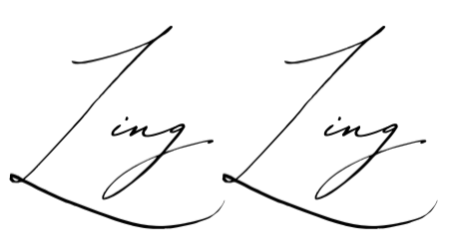Does Diversity In The Workplace Really Make A Difference?
Diversity alone isn't enough to drive change. The real value of diversity emerges when it's paired with inclusive practices that empower all voices in your organization. Inclusivity is the key to unlocking the full potential of a diverse workforce.

In the past decade, there has been a strong call for diversity in the workplace. Experts, researchers, and professionals have touted the benefits and advocated for it. Here is a small sampling of diversity research showing the benefits of a diverse workforce.
- In 2015, a McKinsey report found that ethnically and racially diverse leadership teams were 35% more likely to have financial returns above their industry average.
- Research has also shown that diversity breeds innovation, where companies with more women are more likely to introduce radical innovations into the market.
- Another study also suggests that diversity disrupts conformity and encourages deliberation, helping teams focus on facts.
To reap the benefits of diversity, you need to look beyond the demographic composition of your workforce. Diversity alone does not make a difference. To harness the benefits of diversity, you need to cultivate inclusive practices in your organisation.
Inclusive practices can range from enforcing work policies to organising training and hiring a Diversity & Inclusion Consultant to provide guidance. However, before delving into the “how” of harnessing diversity, we must first understand "why" diversity and inclusion can be a struggle to cultivate in the workplace.
The Struggles of Diversity
A workplace with mixed racial, gender, religion, age, etc., poses a struggle for each person within the organisation. Yet, these are the very same people who are required to practice inclusion. If their personal struggles with diversity are not addressed, requiring them to practice inclusion will be ineffective.
What might some of these diversity struggles be?
Discomfort in Diversity
It is human nature to feel safe and comfortable in our tribe. Our tribe knows us well, and we know its members well, too. We accept the rules of our tribe, and in return, the tribe welcomes, shelters and protects us. We have a place to belong.
When we leave our tribe to be among people from other tribes, we will naturally feel discomfort. We don’t play by the same rules or speak the same language. We don’t know how others think or feel. We may make mistakes and offend others, accidentally break trust, and destroy relationships without realising it.
This discomfort may drive us away from foreign experiences and people searching for and hanging out with similar people in a diverse environment. This is why we see students from the same country have meals, study, and live together in overseas universities, expatriates living in similar neighbourhoods, dining in similar restaurants, cafes, and bars, and employees conversing in their native language when the lingua franca is in another language.
It takes less effort to converse and behave around people from our tribe. It takes infinitely more effort and energy to observe, learn, navigate, practice, and make mistakes among different people. This additional effort to understand and fit in makes diversity uncomfortable.
Fit In or Leave
The need for acceptance and the fear of rejection are fundamental to human survival. When a specific cultural norm is established in the workplace, new employees are expected to “fit in.” “Fitting in” entails changing one’s fashion, speech, and even personal values and beliefs.
The dark side of “fitting in” is that one may need to suppress emotions and personal expressions. Trying to “fit in” also means denying or concealing one’s identity. A famous American animation studio, Pixar4, released a viral short story about a ball of pink yarn named Purl. Purl was hired into a fast-paced, high-energy start-up, where Purl needed to “fit in” to be accepted.
📹 by Pixar
Purl’s story has a happy ending. Unfortunately, if these issues are left unaddressed, the talents and experiences of employees like Purl will not be realised. When such pressures continue to exist, people will become disengaged, demotivated, and eventually leave.
Concealing Stigma
Not everyone can fit in, especially when it goes against their identity, values and beliefs. Research has shown that if you cannot be yourself, it will negatively affect your self-esteem and overall well-being.
However, if people choose to be themselves, they may encounter social exclusion, harassment and even discrimination. For example, gay men are victimised more than other sexual minorities, and more than half have experienced verbal harassment.
The threat of being criticised or abused creates an unsafe work environment for people with stigmatised identities. They face a dilemma between tolerating discrimination against themselves to maintain their livelihoods or protect their dignity and risk tarnishing their careers. If unsafe and toxic environments continue to be unchecked, the psychological well-being of your employees will suffer, and so will the company culture.
Harnessing Diversity to Make a Difference
Becoming aware and identifying the struggles of a diverse workplace is only the first step in harnessing its benefits. Apart from relying on the expertise of your diversity officer, below are three ways to start practising inclusion immediately.
Leadership Priority
The best place to start demonstrating diversity and inclusion is at the leadership level. A global analysis by Credit Suisse indicates that organisations with one female board member saw higher net income growth and return on equity compared to company boards without women.
Making diversity and inclusion a priority is not just about ensuring the leadership team has gender parity or racial diversity. Leaders need to advocate and demonstrate inclusive practices and recognise and reward others who champion inclusion.
Advocating raises awareness of diversity struggles and the benefits of inclusion. When leaders demonstrate inclusivity, it signals to the entire organisation and the business community that this issue matters and encourages others to follow. When leaders make Diversity and Inclusion a priority, the organisation will slowly but surely embody it in its culture.
Learning
For any effective change of behaviour to occur, there first needs to be awareness, which can be raised by leadership making diversity a priority. To make diversity a priority, learning within the organisation must take place.
Learning can take many forms, such as training programmes, books, videos, podcasts, or even a coaching conversation with a manager. Learning provides individuals with an openness to different mindsets, the embodiment of inclusive principles, and specific tools to address diversity struggles and incorporate inclusive practices in their lives and work.
If you are looking for programmes, you can consider training in unconscious bias, empathy, perspective-taking, gender equality, racial diversity, supportive communication, inclusive leadership, and more.
Peer Support
Understanding the specific issues faced by particular social groups can be a challenge. While we can practice empathy, there are specific group issues that we cannot entirely comprehend.
For example, it requires an abundance of courage for a person with a homosexual orientation to reveal their true identity to their loved ones and peers. A person with a heterosexual orientation may empathise but may not completely understand the underlying fear of rejection, low self-esteem, sense of isolation, etc. Forming peer support groups within your workplace will help your employees address and manage issues when they arise.
While peer support groups may seem counterintuitive to cultivating a diverse and inclusive workplace, these groups help address the individual’s struggles of fitting in and the stigma faced because of one’s identity. Some benefits of forming peer support groups include
- Receive moral and emotional support from those who speak the language.
- Receive advice and learn from those who have gone through the same challenges.
- Learn and apply tools that help their peers to address and manage struggles.
Diversity does make a difference…
Only if EVERYONE in the organisation accepts each other's differences and practices inclusion. From the board to front-line staff, if every person takes one inclusive action, your organisation and employees will immediately benefit from diversity. Most importantly, it starts from you, the reader.
What are you going to do to be more inclusive?
This post is updated from the originally published post on Culture Spark Global on 9 November 2021 and written by the same author, Ling Ling Tai.




